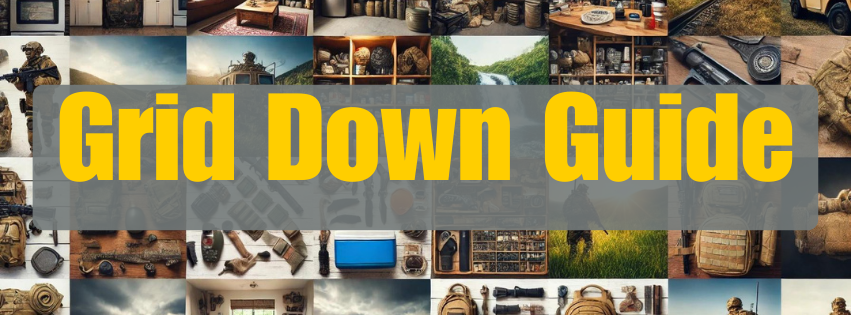
Looking to create a neighborhood emergency response team but not sure where to start? In this article, we’ll walk you through the steps to establish an effective team in your community. From recruiting members to organizing training sessions, we’ll provide you with the guidance and resources you need to ensure your neighborhood is well-prepared for any emergency situation. Don’t wait any longer – take the first step towards creating a safer and more resilient community today!
Introduction
So you want to create a neighborhood emergency response team? That’s fantastic! Having a team of trained individuals ready to respond in times of crisis can make a huge difference in your community’s safety and well-being. In this article, we will guide you through the steps of creating a neighborhood emergency response team from scratch. Let’s get started!
Why Should You Create a Neighborhood Emergency Response Team?
Having a trained team of volunteers in your community can help you save lives and reduce the impact of an emergency. However, it’s crucial to understand why having enough resources is essential when first responders are struggling with disaster after tragedy or crisis; building & training that means being present at all times will allow for immediate response by any volunteer needed.
Step 1: Assess Your Neighborhood’s Needs
The first step in creating a neighborhood emergency response team is to assess the needs of your community. Consider the types of emergencies that are most likely to occur in your area, such as natural disasters like hurricanes, earthquakes, or floods. Take into account the unique characteristics of your neighborhood, such as population density, demographics, and vulnerabilities. By understanding your community’s needs, you can tailor your response team to provide the most effective assistance.
Step 2: Recruit Volunteers
Once you have a good understanding of your neighborhood’s needs, it’s time to recruit volunteers for your emergency response team. Reach out to your neighbors, community organizations, local businesses, and schools to find individuals who are willing to dedicate their time and effort to training and preparing for emergencies. Look for people with a variety of skills and backgrounds, as diversity can be an asset in an emergency response team.
| Volunteer Name | Contact Information | Skills/Experience | Availability |
|---|---|---|---|
| John Smith | johnsmith@email.com | CPR certification, First Aid training | Weekends, evenings |
| Jane Doe | janedoe@email.com | Firefighter, EMT training | Weekdays, weekends |
| Sarah Lee | sarahlee@email.com | Community organizer, communication skills | Evenings, weekends |
Step 3: Provide Training
Training is a crucial component of creating an effective neighborhood emergency response team. Provide your volunteers with training in first aid, CPR, basic firefighting techniques, emergency communication, and disaster response protocols. Consider partnering with local emergency services or organizations like the Red Cross to offer formal training programs. Regular drills and exercises can help to keep your team sharp and prepared for any emergency that may arise.
Step 4: Develop an Emergency Response Plan
With your team of volunteers trained and ready to go, it’s time to develop an emergency response plan for your neighborhood. This plan should outline how your team will respond to different types of emergencies, including how communication will be managed, where emergency supplies will be stored, and what roles each team member will have. Make sure to regularly review and update your emergency response plan to reflect changes in your community or new information about emergency procedures.
Step 5: Establish Communication Channels
Effective communication is key to a successful emergency response. Establish clear communication channels within your neighborhood emergency response team, as well as with local emergency services and authorities. Utilize tools like social media, walkie-talkies, phone trees, and neighborhood watch apps to keep everyone informed and connected during an emergency. Having a reliable communication system in place can help to coordinate efforts and ensure that everyone stays safe.
Step 6: Procure Emergency Supplies
In addition to having a well-trained team and a solid emergency response plan, it’s important to have the necessary supplies on hand to respond to emergencies. Procure emergency supplies such as first aid kits, flashlights, batteries, non-perishable food, water, blankets, and other essential items. Store these supplies in a central location that is easily accessible to your team members, and make sure to regularly check and restock them to keep them up to date.
Step 7: Establish Partnerships
Building a local emergency response team is not limited to creating your own. Collaborating with community organizations, businesses, and government agencies can provide additional resources, expertise, staffing levels, or other tools for building an effective partnership that will enhance disaster preparedness in any situation where assistance may be required.
Conclusion
Creating a neighborhood emergency response team is a significant undertaking, but the benefits far outweigh the challenges. By following these steps and working together with your community, you can create a well-prepared and effective team that can make a real difference in times of crisis. Remember, every contribution, no matter how small, can have a big impact when it comes to ensuring the safety and well-being of your neighborhood. So roll up your sleeves, gather your neighbors, and start building your neighborhood emergency response team today!
